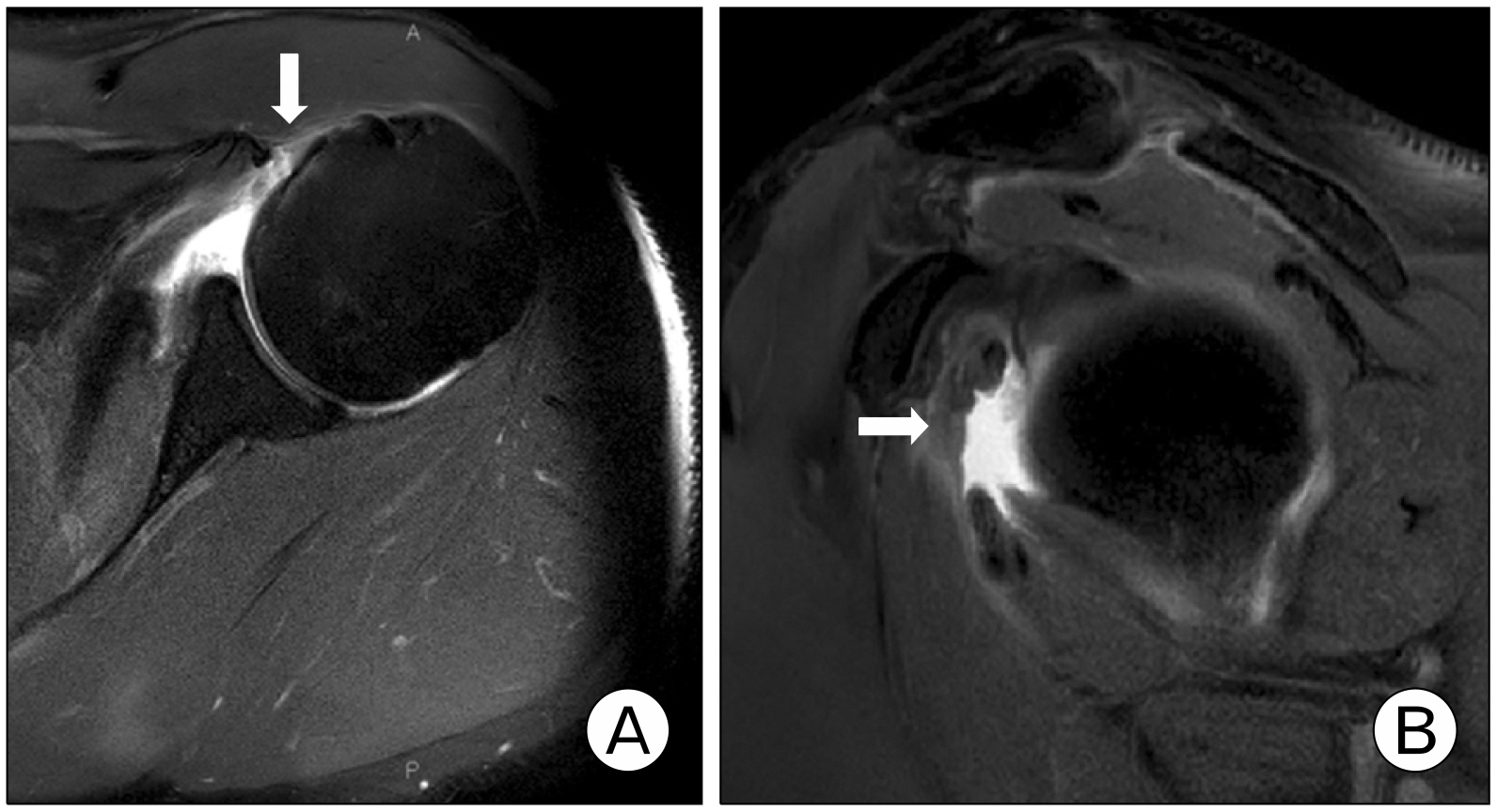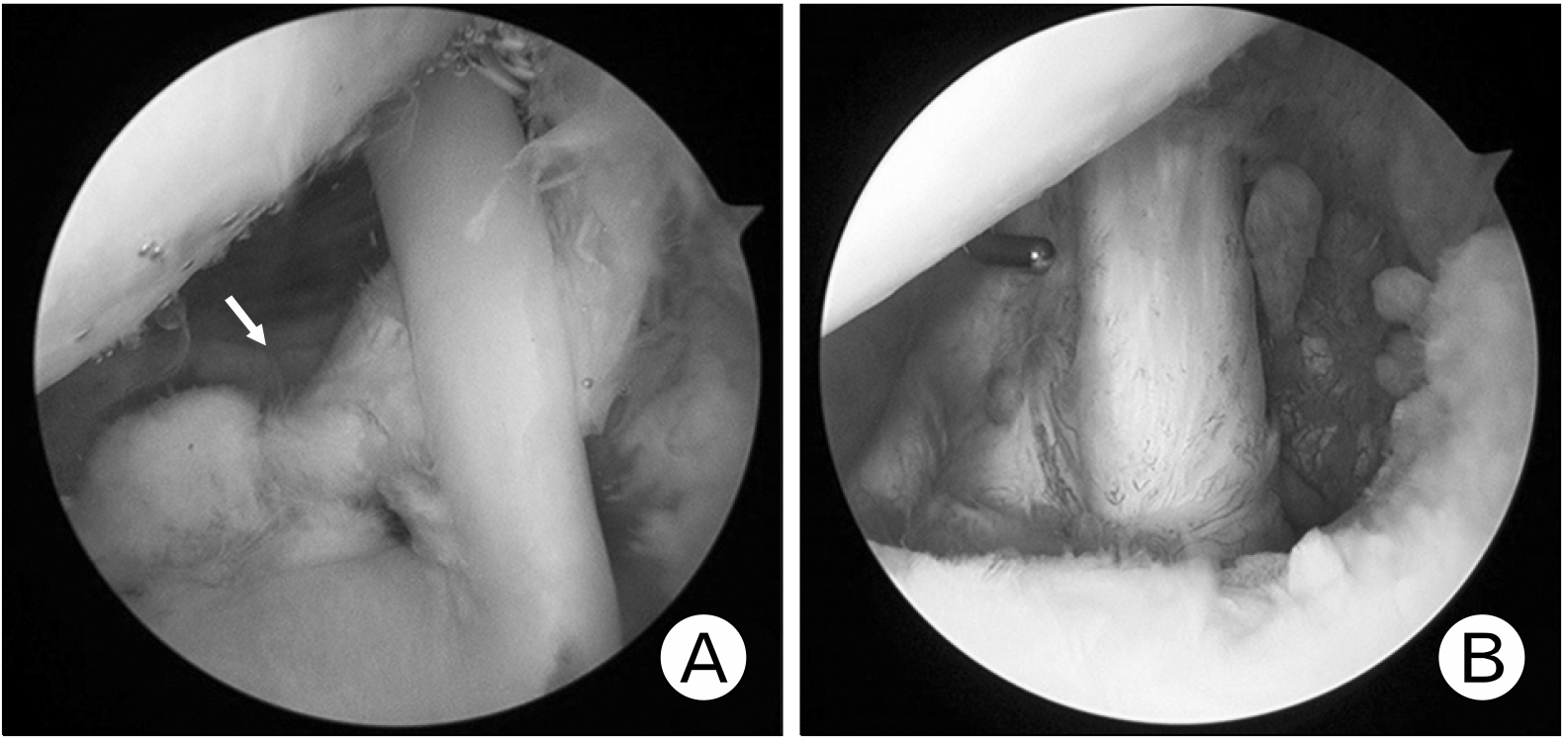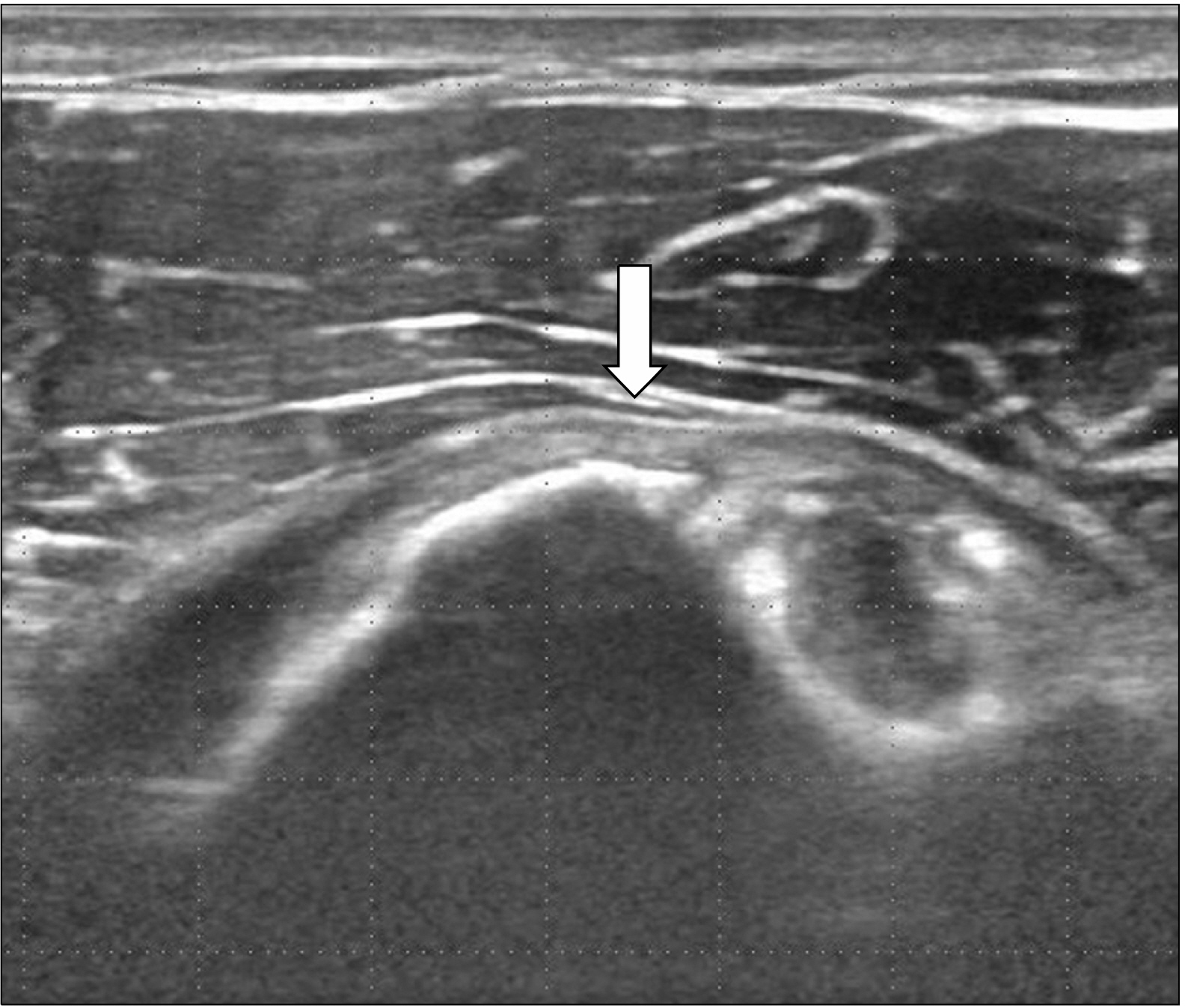Korean J Sports Med.
2023 Sep;41(3):169-172. 10.5763/kjsm.2023.41.3.169.
Isolated Subscapularis Tear during Sparring in a Professional Boxer: A Case Report
- Affiliations
-
- 1Department of Orthopedic Surgery, Soonchunhyang University Cheonan Hospital, Cheonan, Korea
- 2Department of Orthopedic Surgery, Soonchunhyang University Bucheon Hospital, Bucheon, Korea
- KMID: 2545832
- DOI: http://doi.org/10.5763/kjsm.2023.41.3.169
Abstract
- The subscapularis tendon is the largest and most powerful muscle in the rotator cuff, playing a more important role in raising the arm than the supraspinatus or infraspinatus tendon. Subscapularis tendon tears are uncommon, but when it does occur, symptoms are often minimal and diagnosis can be delayed until severe atrophy occurs, leading to weakness of the shoulder muscles. Therefore, early diagnosis and surgical repair of suspected subscapularis tendon injury in athletes is very important for achieving the best functional outcome. Shoulder injuries in professional boxers have been reported to account for only about 3% of all boxing injuries, but there is no specific research on the specific location of these injuries. In this study, the authors report on a case of isolated subscapularis tendon injury that occurred during sparring in a professional boxer and discuss the mechanism of injury and treatment outcomes along with a review of the literature.
Keyword
Figure
Reference
-
1. Yoo JC, Rhee YG, Shin SJ, et al. 2015; Subscapularis tendon tear classification based on 3-dimensional anatomic footprint: a cadaveric and prospective clinical observational study. Arthroscopy. 31:19–28. DOI: 10.1016/j.arthro.2014.08.015. PMID: 25442662.
Article2. Yoon TH, Kim SJ, Choi YR, Keum HS, Chun YM. 2021; Clinical outcomes for isolated subscapularis tears with advanced fatty infiltration: nonoperative treatment versus arthroscopic single-row repair. Orthop J Sports Med. 9:2325967120975754. DOI: 10.1177/2325967120975754. PMID: 33614807. PMCID: PMC7869153.
Article3. Bledsoe GH, Li G, Levy F. 2005; Injury risk in professional boxing. South Med J. 98:994–8. DOI: 10.1097/01.smj.0000182498.19288.e2. PMID: 16295814.
Article4. Piasecki DP, Nicholson GP. 2008; Tears of the subscapularis tendon in athletes--diagnosis and repair techniques. Clin Sports Med. 27:731–45. DOI: 10.1016/j.csm.2008.06.005. PMID: 19064153.
Article5. Garrigues GE, Warnick DE, Busch MT. 2013; Subscapularis avulsion of the lesser tuberosity in adolescents. J Pediatr Orthop. 33:8–13. DOI: 10.1097/BPO.0b013e318270d0d6. PMID: 23232372.
Article6. Gerber C, Krushell RJ. 1991; Isolated rupture of the tendon of the subscapularis muscle. Clinical features in 16 cases. J Bone Joint Surg Br. 73:389–94. DOI: 10.1302/0301-620X.73B3.1670434. PMID: 1670434.
Article7. Cornelia Z, Steiner I, Robert B, Fiala R, Krifter RM. Shoulder injuries in boxing. a systematic review. Research Square. 2021; Apr. 29. [Preprint]. https://doi.org/10.21203/rs.3.rs-457153/v1. DOI: 10.21203/rs.3.rs-457153/v1. PMCID: PMC8645801.
Article8. Polousky JD, Harms S. 2011; Subscapularis tendon injuries in adolescents: a report of 2 cases. J Pediatr Orthop. 31:e57–9. DOI: 10.1097/BPO.0b013e31821f92ca. PMID: 21654450.9. Park SG, Shim BJ, Seok HG. 2020; Isolated avulsion fracture of the lesser tuberosity of the humerus in an adolescent amateur boxer. JSES Int. 4:759–64. DOI: 10.1016/j.jseint.2020.04.010. PMID: 33345212. PMCID: PMC7738451.
Article10. Beall DP, Williamson EE, Ly JQ, et al. 2003; Association of biceps tendon tears with rotator cuff abnormalities: degree of correlation with tears of the anterior and superior portions of the rotator cuff. AJR Am J Roentgenol. 180:633–9. DOI: 10.2214/ajr.180.3.1800633. PMID: 12591665.
- Full Text Links
- Actions
-
Cited
- CITED
-
- Close
- Share
- Similar articles
-
- Unusual Isolated Complete Tear of Subscapularis and Biceps Long Head Tendon Associated with Heterotopic Ossification
- Isolated Medial Dislocation of the Long Head of the Biceps without Rotator Cuff Tear: A Case Report
- Subclavian Portal Approach for Isolated Subscapularis Tendon Tear: Technical Note
- Arthroscopic Treatment with Suture Anchor for the Isolated Subscapularis Tear
- Isolated Avulsion Fracture of the Subscapularis from the Lesser Tuberosity of the Humerus in a 12-Year-Old Boy - A Case Report -





